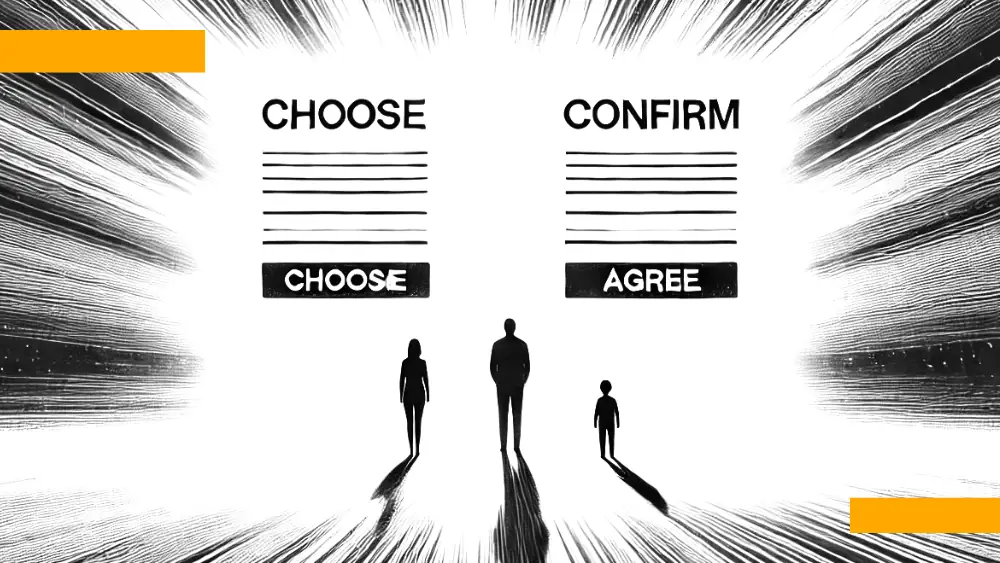 illustration: DALL-E
illustration: DALL-EIn the age of digital dominance, where every click and swipe leaves a trace, the topic of content personalization takes on a new dimension. Vaclav Moravec from Charles University in Prague and a team of researchers from the Czech Republic, Croatia, Poland, Slovakia, and Ukraine examined how different social groups understand the phenomenon of online content personalization. Based on data collected from 1,213 Czech citizens, the authors show that awareness of how personalization algorithms work in media is highly socially differentiated. The results of the study were published in the article “Algorithmic personalization: a study of knowledge gaps and digital media literacy” in Humanities and Social Sciences Communications, part of the Nature Portfolio.
Content personalization: opportunity or threat?
The main goal of the study was to analyze citizens’ knowledge of how online services tailor content to users. Personalization relies on data - from search history to location and shopping preferences - and serves to increase message relevance. But while the benefits are clear (faster access to relevant information, tailored ads), there is growing concern about the loss of privacy and informational manipulation.
The authors of the “Algorithmic personalization” report emphasize that understanding personalization mechanisms is key not only to protecting personal data but also to the ability to critically assess content. Informed individuals can influence algorithms, limit manipulation, and better protect their privacy.
Who knows more? Social differences in knowledge about algorithms
Researchers used a three-step analysis system based on an informational model, fuzzy logic method, and social classification. They asked respondents about:
- awareness that online content is personalized,
- knowledge of technical ways content is customized,
- feeling of control over what they see online.
Based on these three areas, the researchers developed knowledge metrics that include both objective understanding of how algorithms work and users’ subjective sense of influence over their digital environment. The study`s authors used data from 1,213 surveys, analyzing them with demographic variables such as age, gender, and education level. The results made it possible to define knowledge levels about personalization for different social groups with numerical values between 0 and 1 - the higher the value, the greater the user’s awareness.
| Social group | Knowledge level about personalization |
|---|---|
| Men aged 35-44, higher education | 0.812 (above average) |
| Women aged 15-24, higher education | 0.821-0.812 |
| People with vocational education | 0.661-0.672 (low scores) |
These differences show that younger users with higher education better understand how content-personalizing algorithms work. Meanwhile, those with lower education levels more often report a lack of control over what they see online. This raises questions about informational equality and the need for education.
Real-life example. Netflix and the illusion of choice
Let’s imagine two Netflix users - a thirty-year-old woman with higher education and a fifty-year-old manual worker. Although both open the same platform, the algorithm shows them completely different recommendations. She sees political documentaries and indie films, while he gets comedies and entertainment shows. Both believe they have a choice, but in reality, they watch what the algorithm deems suitable. If they are unaware of this mechanism, they may wrongly assume it’s the result of their “free will.”
This is exactly the issue raised in the report by Moravec and his co-authors - the invisible hand of the algorithm guides the user, who often doesn’t realize it.
Education as the answer
The research team proposes concrete solutions. Their analytical-information system allows for nuanced evaluation of citizens’ knowledge, accounting for demographic differences. Notably:
- the system works regardless of the number of criteria or questions,
- it can be adapted to other regions or countries,
- it enables the implementation of educational programs tailored to specific social groups.
Thanks to this tool, it is possible, for example, to identify groups most vulnerable to manipulation and include them in specialized media education programs. As the “Algorithmic personalization” report shows, such actions are necessary - especially in the face of the risk that personalization deepens social divides, traps users in information bubbles, and facilitates the spread of disinformation.
Among the researchers’ plans is the development of software that will allow practical application of the methodology in different contexts. The next step is to analyze factors influencing the acceptance of personalized content and to study the relationships between perceived disinformation risks and trust in media.
The study by Moravec and his co-authors is not only a scientific analysis but also a call to action for policymakers - from NGOs to state institutions - not to ignore differences in digital competencies. The more people understand how algorithms work, the lower the risk that society will become a passive recipient of manufactured content.
* * *
More about the study: Moravec V., Hynek N., Skare M., Gavurova B., Polishchuk V. (2025). Algorithmic personalization: a study of knowledge gaps and digital media literacy. Humanities and Social Sciences Communications. https://doi.org/10.1057/s41599-025-04593-6
COMMERCIAL BREAK
New articles in section Media industry
Advertising market 2025. Poland, Europe and the World
Marcin Grządka
The global advertising market is growing by 8.8% in 2025 and will reach a value of 1.14 trillion dollars. The industry result in Europe records slightly lower dynamics, at the level of 5.8%. In this comparison, Poland performs clearly above the average. We will record an increase of 8.9% this year and a value of 18.56 billion PLN - estimates WPP Media in the annual report "This Year Next Year".
The print media market 2025. Three global trends
Krzysztof Fiedorek
The market value is 359.53 billion dollars, yet the erosion is visible to the naked eye. The decline for newspapers will amount to -2.3 percent. Despite this, print retains strength: it generates 76 percent of subscription revenues and enjoys 82 percent consumer trust. The future of the industry is defined by hybrid strategies and niche specialization.
Journalism in the age of AI. Why people prefer humans over machines
Krzysztof Fiedorek
Only 12% of people accept news created solely by AI, while 62% prefer those written by humans. At the same time, only 19% notice labels indicating the use of artificial intelligence, while younger audiences ask AI to explain the content to them. These are the findings of the Reuters Institute report on artificial intelligence in media.
See articles on a similar topic:
Journalism and Technology. How Indian Newspapers Fight to Survive
KFi
The COVID-19 pandemic accelerated the transformation of India's press industry. Traditional print media, forced to fight for survival, adopted modern technologies ranging from data analysis to artificial intelligence. How do journalists adapt to new roles, and how do media redefine their future in the digital age? Researchers from the Symbiosis Institute of Media & Communication have explored these questions.
Review of media from around the world. See what they are buzzing about [LINK]
AUTOPROMOCJA Reporterzy.info
What is the media buzzing about? A review of the headlines of the most important newspapers and websites. Events of the day, country, world, media market, economy, sport, foreign media, and even gossip and curiosities. In real time and 24 hours a day. We invite you!
Information bubbles. Study of Instagram, Tik Tok and You Tube users
Urszula Kaczorowska
A staggering 96 percent of the time people spend online is spent on anything but consuming information. This, says Professor Magdalena Wojcieszak means ‘we have over-inflated the issue of information bubbles and disinformation.’
Deepfake Blurs Truth and Falsehood. Human Perception Research
KFi
Studies indicate that only 60% of deepfake images can be correctly identified by humans. As AI begins to dominate content production, the problem of differentiation fatigue grows – users lose confidence in assessing the authenticity of information and fall into cynicism.





























